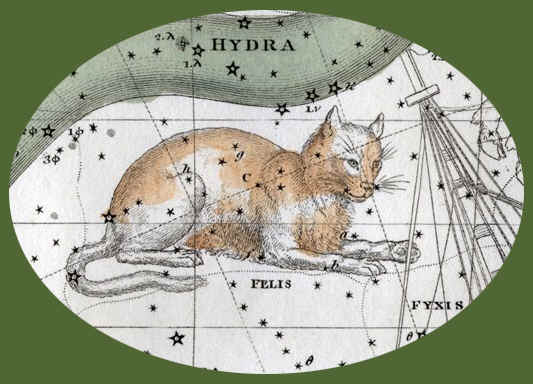
|
Anonimo (da Dürer)
|
Imagines Coeli Septentrionales cum Duodecim Imaginibus Zodiaci e Imagines Coeli Meridionales, Post 1558 |
Anonimo
Imagines Coeli Septentrionales cum Duodecim Imaginibus Zodiaci
e
Imagines Coeli Meridionales, Post 1558
Le due tavole stampate da incisione su rame, ognuna 10,2 cm per 12,7, sono state proposte in vendita all’asta da Old World Auctions nel mese di marzo del 2010 e sono rimaste invendute. La stessa casa d’aste non era in grado di fornire informazioni sull’origine e la locazione delle stesse se non precisare la loro ascendenza stilistica a quelle del Dürer del 1515.

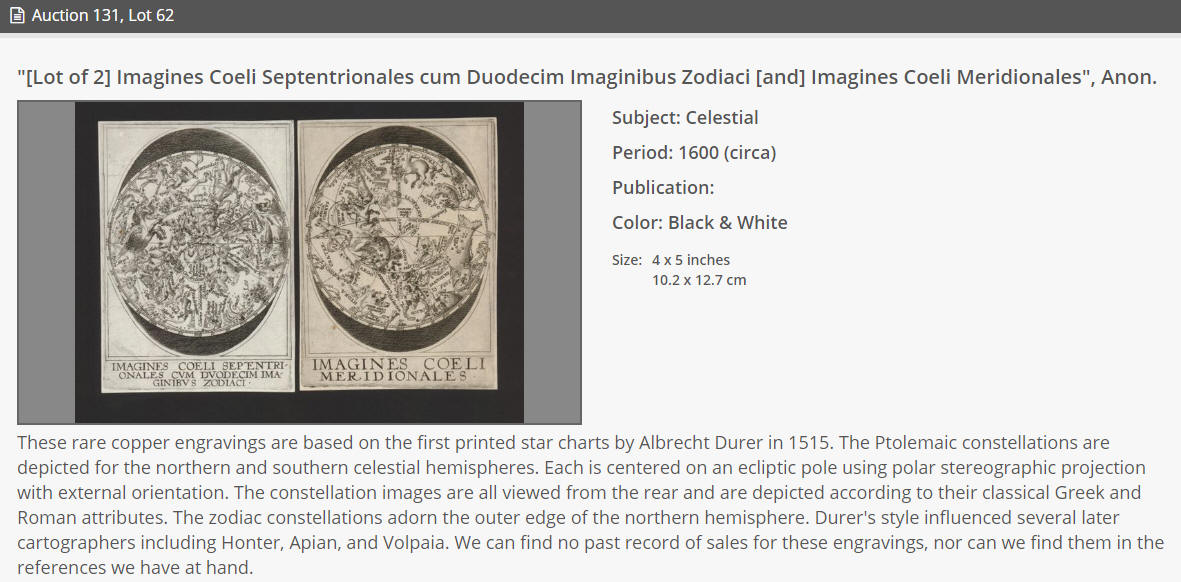
https://www.oldworldauctions.com/catalog/lot/131/62
In effetti le due tavole sembrano essere una riproposta in formato ridotto dei due planisferi celesti contenuti nella grande tavola di Giovanni Andrea Valvassori detto Guadagnino, Nova et integra universalisque orbis totius iuxta germanum neotericorum traditionem descriptio- Gaspar Vopellius Medeb. 1558 Mathemati conscripsit. Impressum Venetiis per Joannem Andream Vavassorium Cognomine Guadagninus, stampata a Venezia nel 1558,
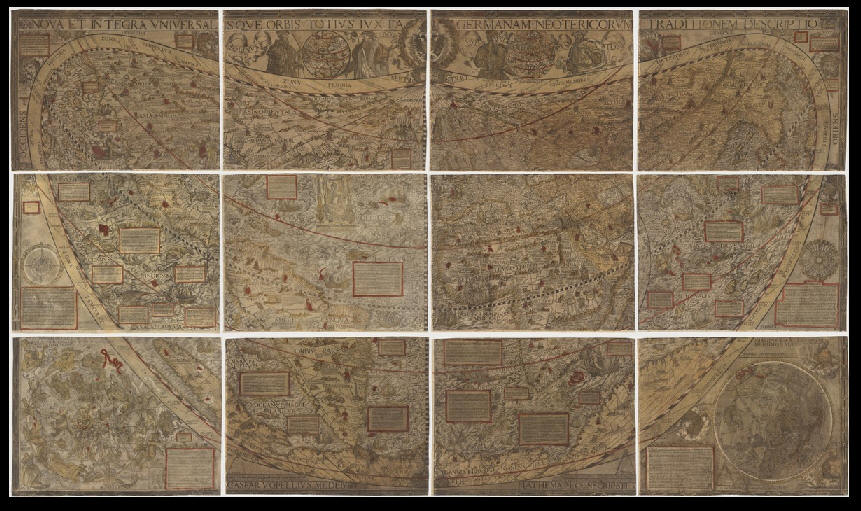
http://www.atlascoelestis.com/Valvassori%201558.htm,
planisferi anche in questa eredi, con alcune aggiunte confermate anche nel nostro anonimo, dei planisferi del Dürer.
Identiche al Valvassori sono le caratteristiche delle proiezioni, dei reticoli di riferimento, uguale l’elenco delle costellazioni, dei loro nomi ( a meno della traduzione greca presente in Valvassori) e dei riferimenti che le accompagnano, identica la proposta di stelle riportate, sia per numero che per magnitudine che per posizione. L’unica differenza importante è nel modo di riprodurre le costellazioni zodiacali che nel planisfero boreale del nostro anonimo non sbordano all’esterno dell'eclittica, come invece accade per il planisfero di Valvassori, e sono quindi completate nell'emisfero meridionale.
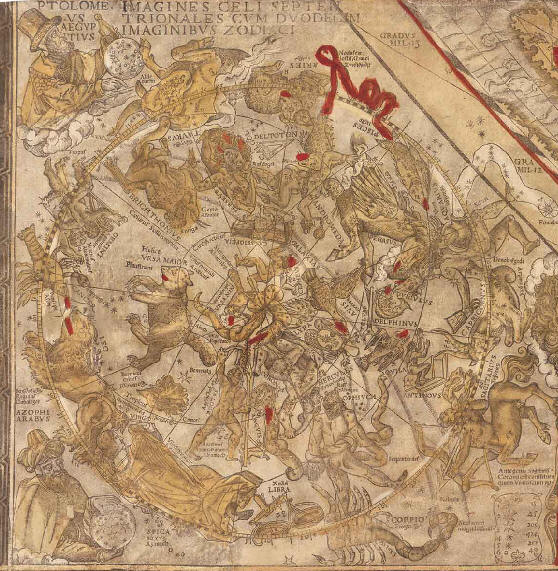
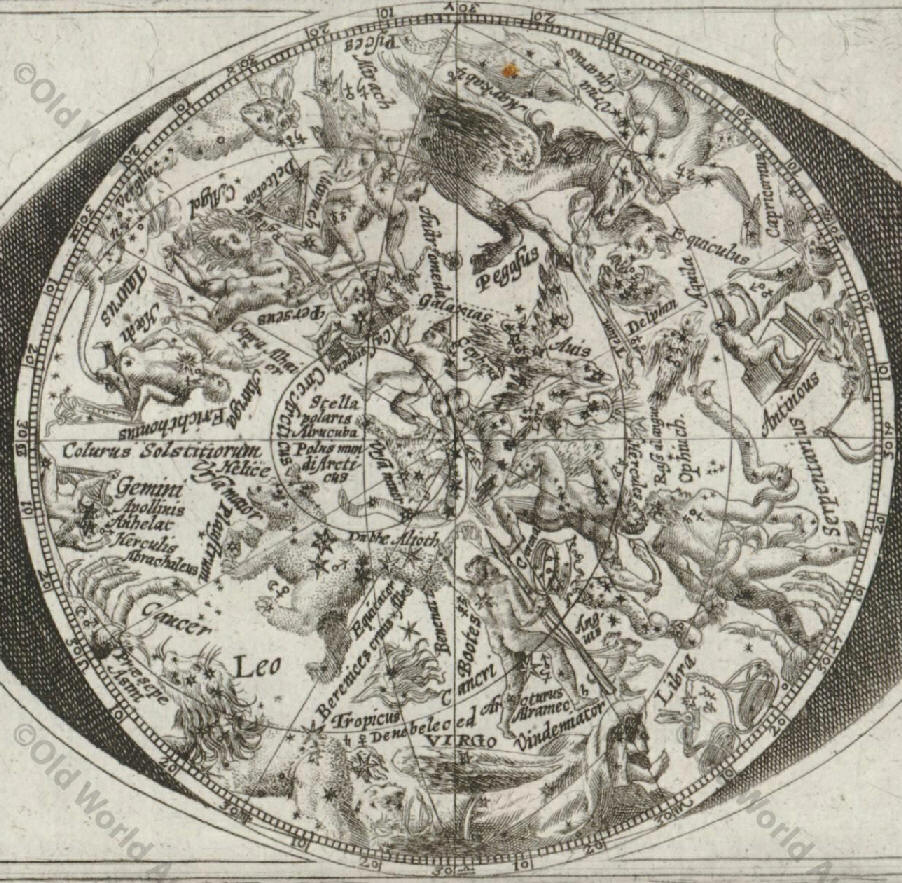
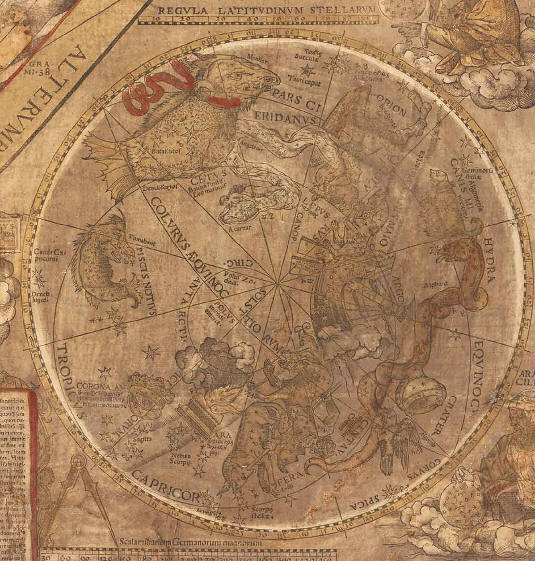
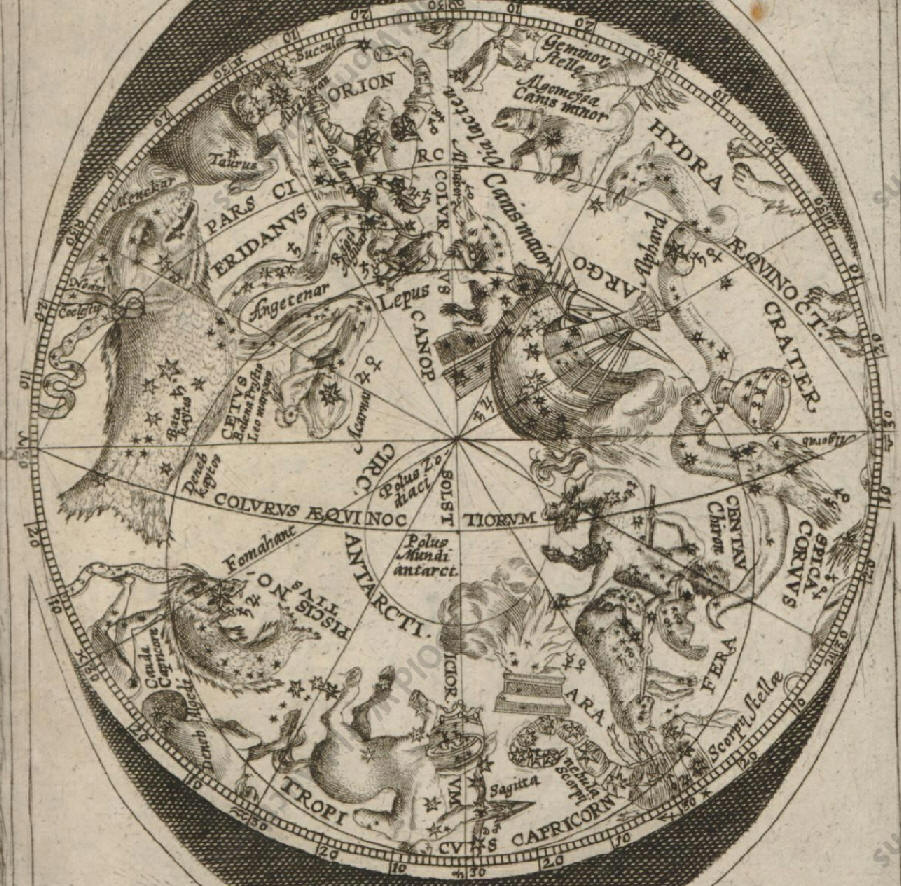
I planisferi sono talmente simili che posso riproporre anche per il nostro la descrizione che viene fatta per quelli del Valvassori nell’articolo di Elly Dekker in :

1) Northern hemisphere
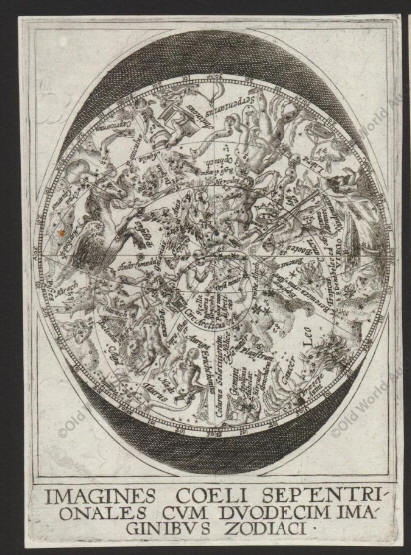
A) Cartography: Polar stereographic projection from the north ecliptic pole to south of the ecliptic to include the zodiacal constellations. Language: Latin and Greek. Coordinates: circles of latitude every 30°. The ecliptic is graduated [twelve times 0°–30°; numbered every 5°, division 1°]. The names and symbols of the zodiacal signs are absent. The part of equator north of the ecliptic is drawn. It is not graduated and not labelled. The north equatorial pole is labelled Polus mundi Arcticus. The north polar circle is drawn and labelled: Circ Arcticus. The Tropic of Cancer is drawn and labelled: Tropicus Cancri. The equinoctial colures (not labelled) are drawn from the vernal to the autumnal equinox passing through the north equatorial pole. The solstitial colures (labelled Colurus Solsticiorum) coincide with the circle of latitude passing through the north ecliptic and equatorial pole.
B) Astronomical notes: All northern and zodiacal Ptolemaic constellations are drawn, and all but one (Draco) are labelled: VRSA MIN / Greek name; VRSA MAIOR / Helice; CEPHEVS; BOOTES / Greek name; CORONA; HERCVLES / Greek name; LYRA, AVIS / Greek name; CASSIOPEIA; PERSEVS; ERICHTHONIVS / Auriga; OPHIVCH / serpentarius; ANGVIS; TELVM; AQVILA; DELPHINVS; EQVICVLVS; PEGASVS; ANDROMEDA; DELTOTON; ARIES / Greek name; TAVRVS / Greek name; GEMINI; CANCER / Greek name; LEO; VIRGO / Greek name; LIBRA / Greek name; SCORPIO / Greek name; SAGITARIVS / Greek name; CAPRICORNVS / Greek name; AQVARIVS / Greek name; PISCES / Greek name. Also the groups of unformed stars belonging to Aquila and Leo are labelled respectively: ANTINOVS and BERENICES CRINIS / Greek name. Outside the hemisphere, below Sagittarius, is the text: Ante genu Sagitarij Corona est constituta quam Vraniscum vo. There are labels for a number of star groups: Plaustrum (located near the head of Ursa Maior), C. ALGOL (Per), Præsepe (Cnc), Asini (Cnc), Vrna (Aqr), Nodvs coelestis / Greek name (Psc), and for the Milky Way: GALAXIAS.
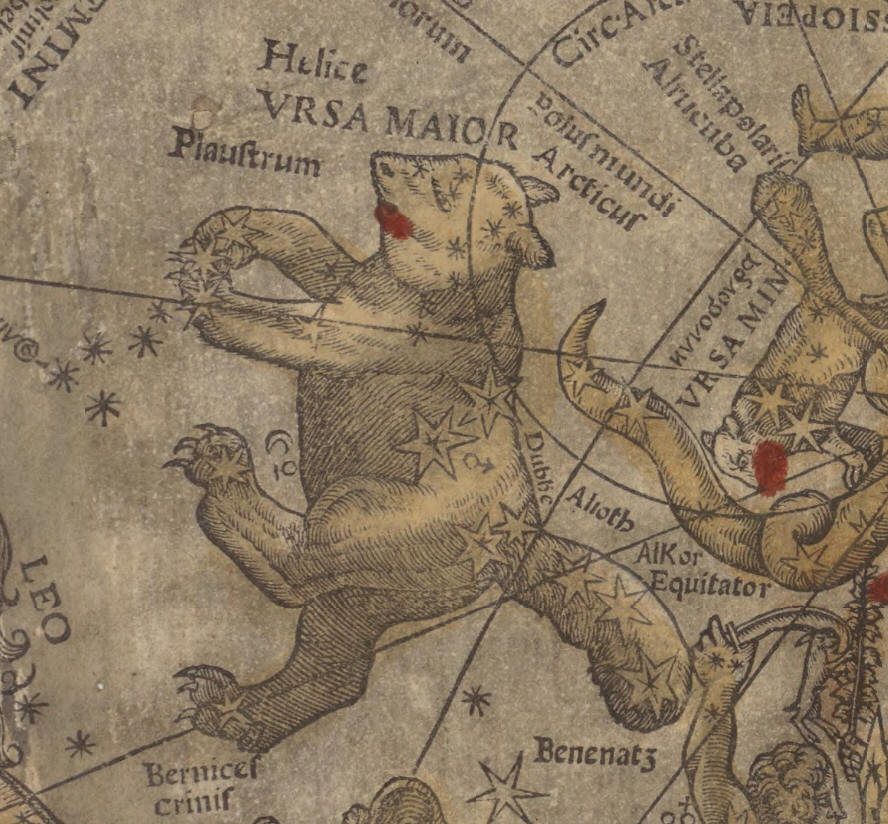
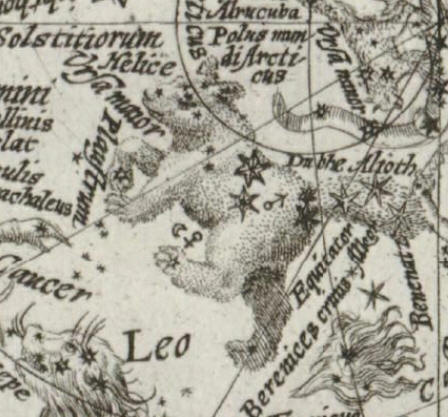
Plaustrum
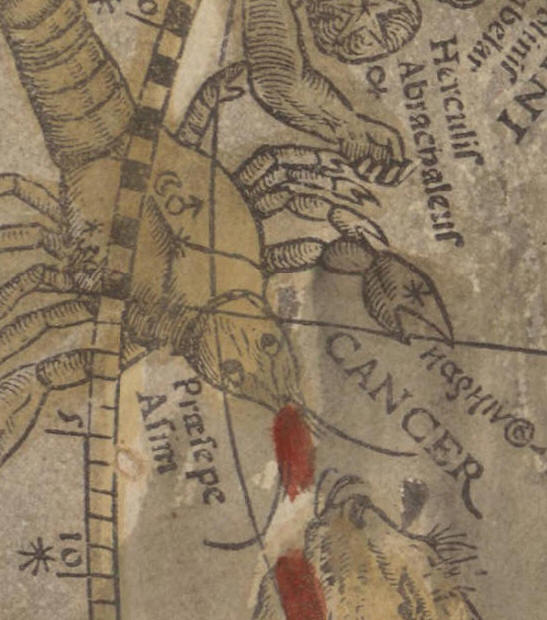
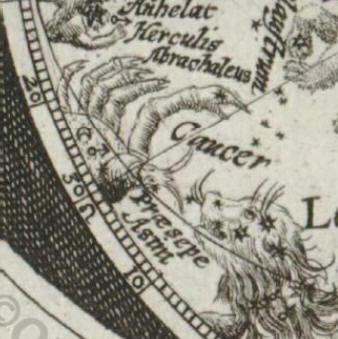
Præsepe, Asini
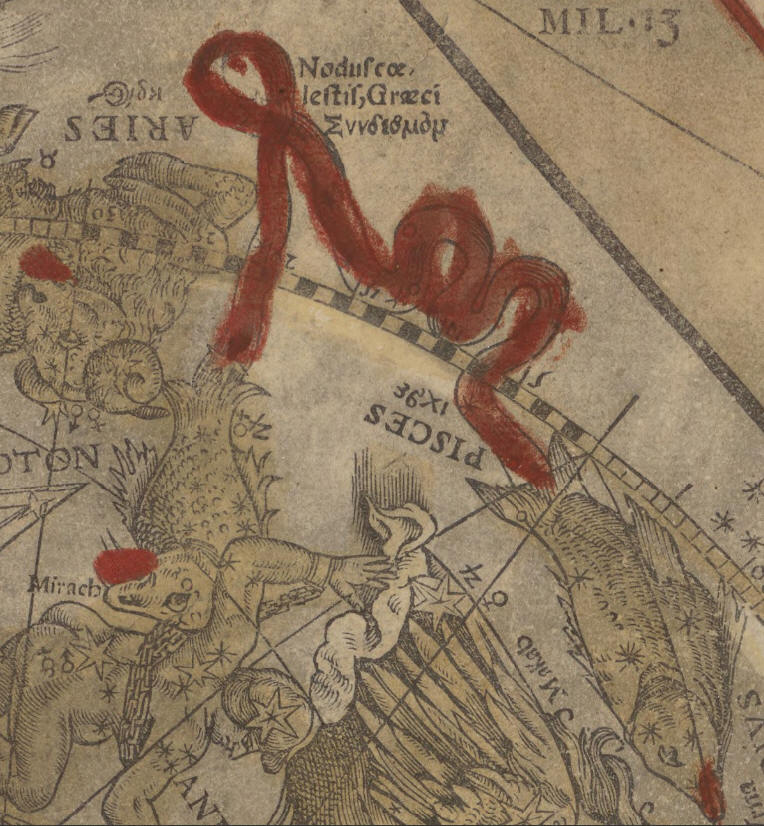
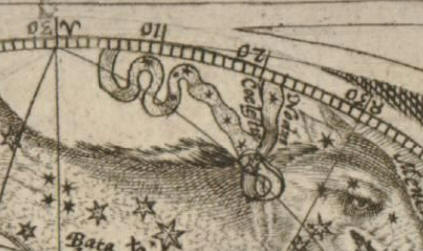
Nodvs coelestis (nell'emisfero australe in anonimo)
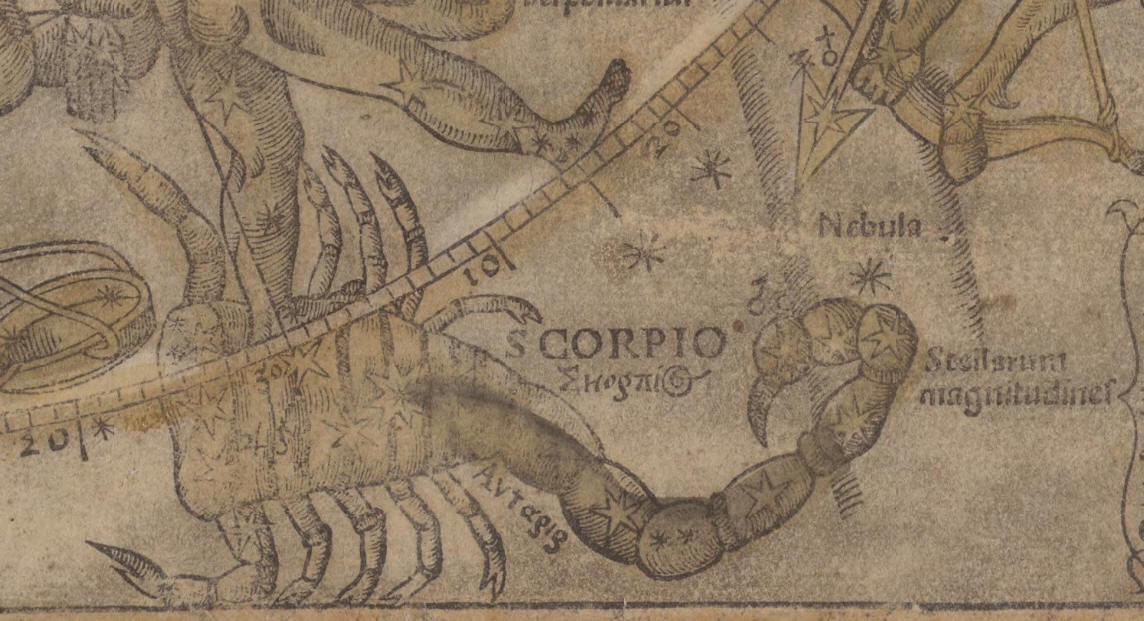
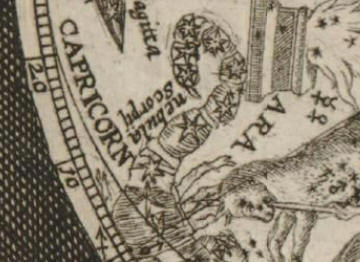
SCORPIO e indicato come Nebula l'ammasso M7 o Ammasso di Tolomeo
(nell'emisfero australe in anonimo)
C) The stars are presented by six different marks to indicate their brightness or magnitude. The stars of the Pleiades are missing. There are planetary symbols for astrological associations, and many stars are labelled: Abrachaleus / Herculis (β Gem), Aldebaran (α Tau), Alhaior (α Aur), Alioth (ϵ UMa), Alkair (α Aql), Alkor/ Equitator (near ζ UMa), Alrucuba (αUMi), Anhelar / Apolinis (α Gem), Arcturus / Azimech aramer / Alramech (α Boo), Benenatz (η UMa), Capra (α Aur), Deneb algedi (δ Cap), Denebeneced (β Leo), Dubhe (α UMa), Fomahant (α PsA), Makab (α Peg), Mirach (β And), Propus (η Gem), Rass Alangue (α Oph), Regulus / Cabalezet / Greek name (α Leo), Rasdagel (β Per), Scheat (δ Aqr), SPICA / Azimech / Greek name (α Vir), Stella polaris (α UMi), Vindemiator (ϵ Vir), Greek name for Antares (α Sco).
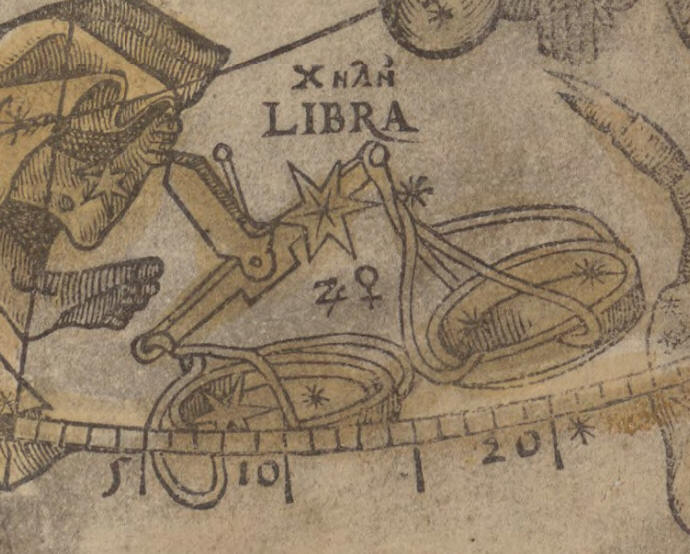
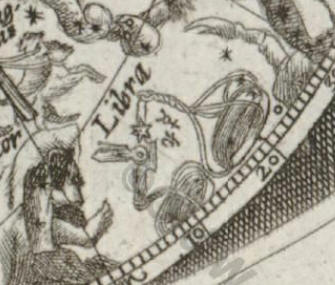
Planetary symbols for astrological associations
D) Iconographic features: The style follows that of Dürer but with some differences: Lyra is a headless bird (note that the orientation of the string instrument differs from that on Vopel's globe by being being placed vertically over the body, as on Dürer's map); Boötes is presented with lance, sickle and hunting dogs, and a goat is eating leaves from a vine above his head; one of the Gemini has a lyre or similar instrument without bow. In addition there are images of Antinous and Coma Berenices comprising the unformed stars belonging to Aquila and Leo, respectively.
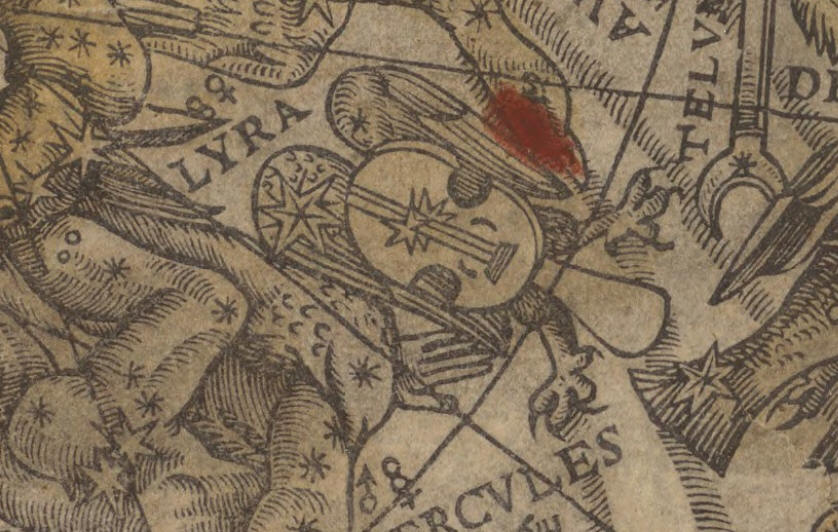
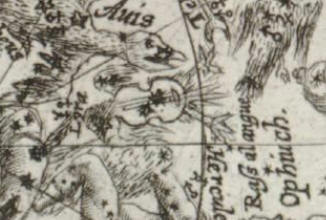
Lyra
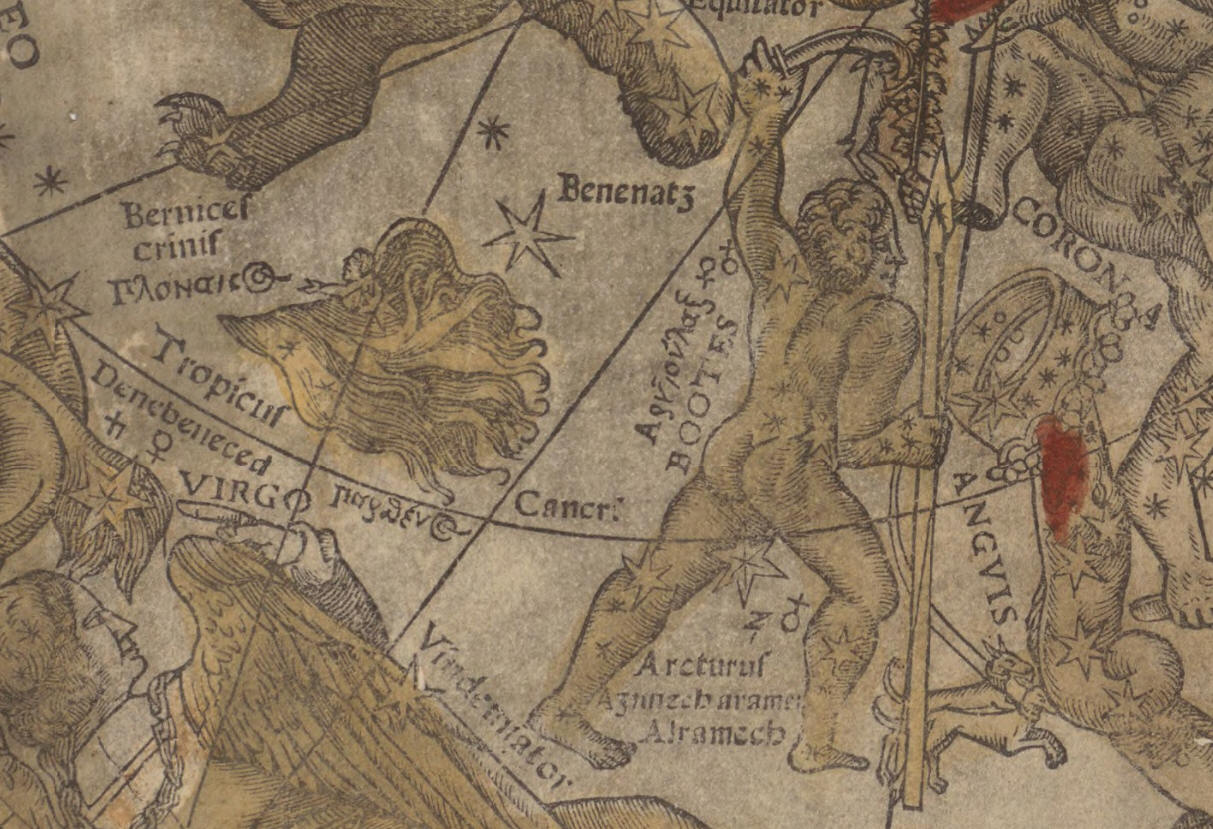
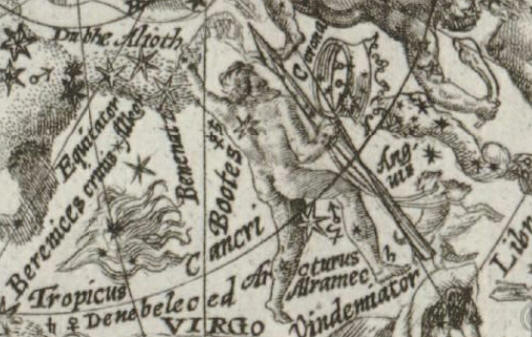
Coma Berenices e Boötes con i Cani da caccia posti in una posizione diversa da quella che occuperanno come costellazione
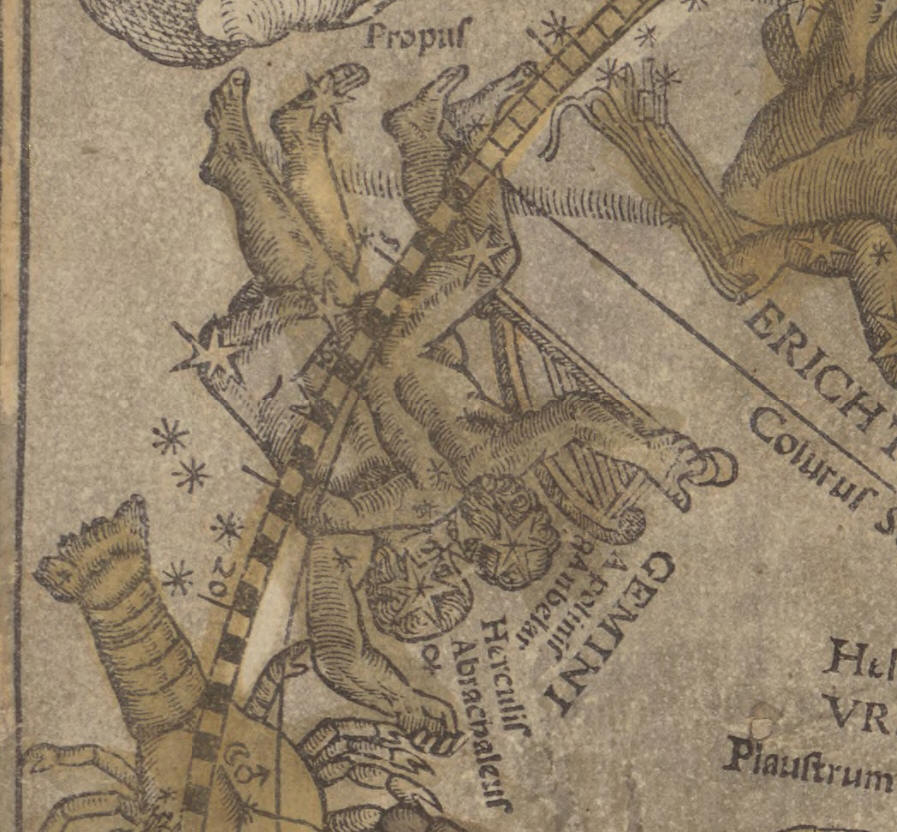
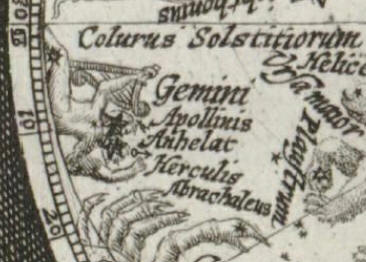
Gemini
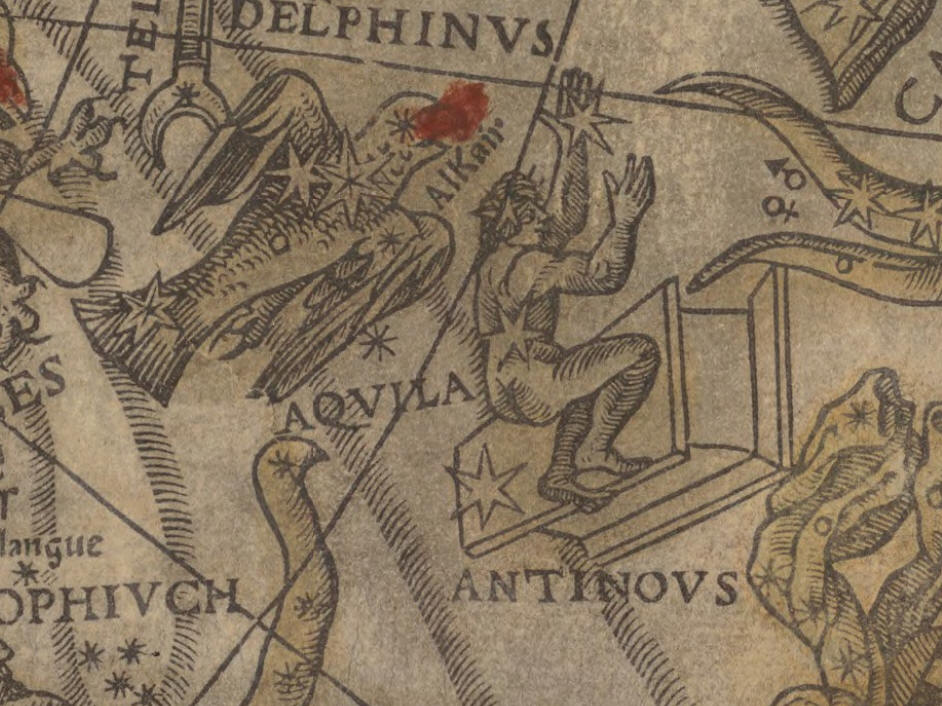
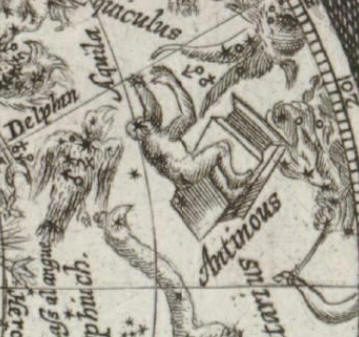
Antinous
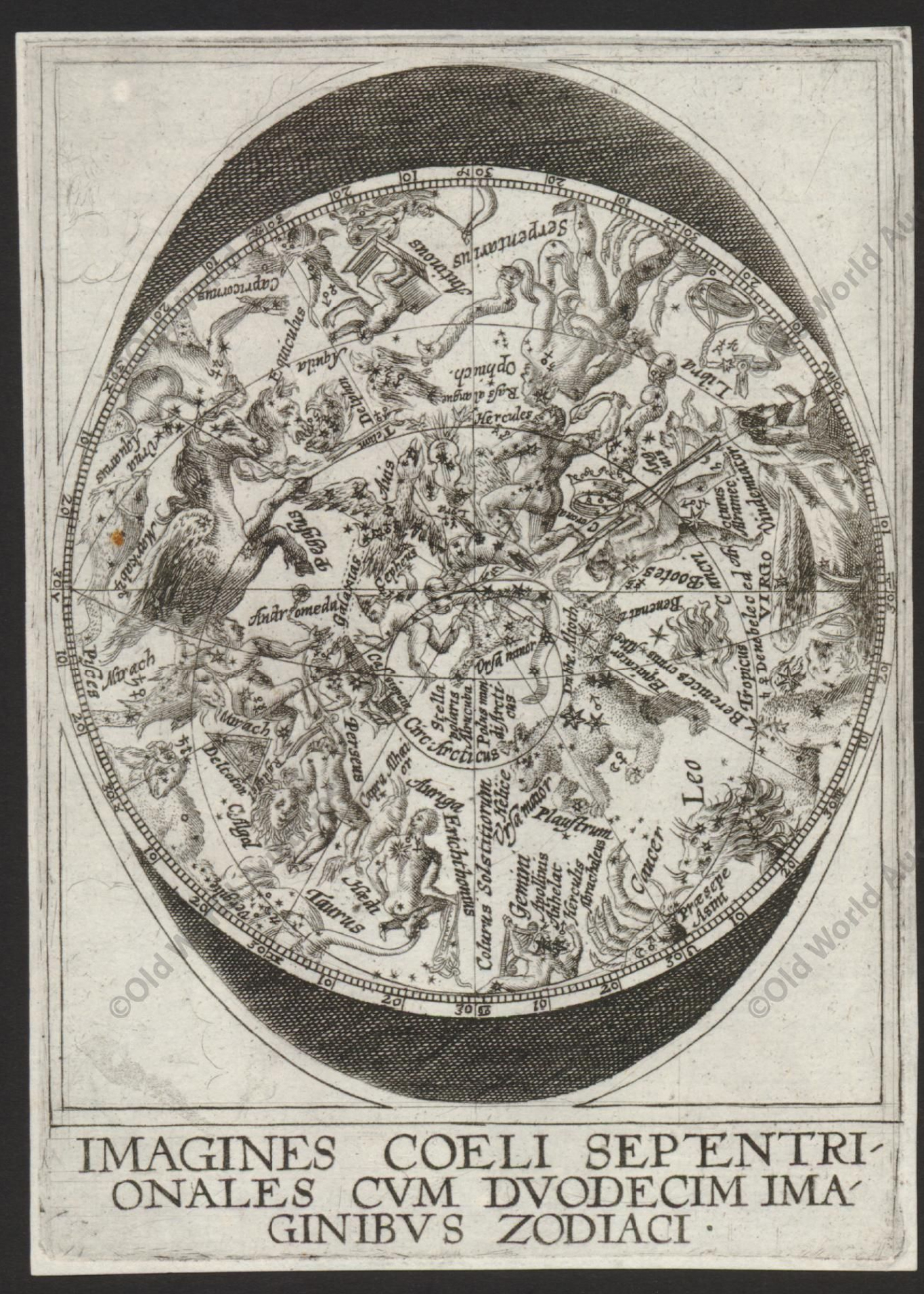
2) Southern hemisphere
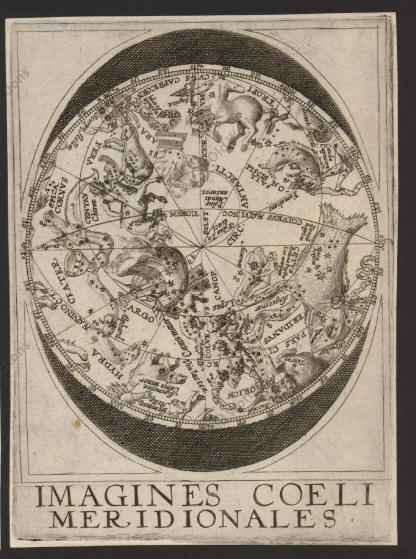
A) Cartography: Polar stereographic projection: from the south ecliptic pole to the ecliptic. Language: Latin and Greek. Coordinates: circles of latitude every 30°. The ecliptic is graduated [twelve times 0°–30°; numbered every 5°, division 1°]. The south ecliptic pole is labelled: Polus Zodiaci. The part of equator south of the ecliptic is drawn. It is labelled: PARS CIRC AEQVINOC but it is not graduated. The south equatorial pole is labelled: POLVS mundi antarct. The south polar circle is drawn and labelled: CIRC. ANTARCTI. The Tropic of Capricorn is drawn and labelled: TROPICVS CAPRICOR. The equinoctial colures, labelled COLVRVS AEQVINOCTIORVM, are drawn from the autumnal to the vernal equinox passing through the south equatorial pole. The solstitial colures, labelled COLVRVS SOLSTICIORVM, coincide with the circle of latitude passing through the south ecliptic and equatorial pole. Below the title is a nonlinear latitude scale, labelled: REGVLA LATITVDINVM STELLARVM [0°–90°; numbered every 10°, division 1°].
B) Astronomical notes: All southern Ptolemaic constellations are drawn and labelled: CETVS / Balena Pristis Leo marinus, ORION, ERIDANVS, LEPVS / Greek name, CANIS MAIO, CANIS MI. / Greek name, ARGO, HYDRA, CRATER, CORVVS, CENTAV. / Phyllirides Chiron, FERA / Greek name, ARA/ Greek name, CORONA AV / Greek name, PISCIS NOTIVS. Close to Corona Australis is the text: Hanc nonnulli Vraniscum vocauere. There are labels for a number of star groups: Succulæ / Greek name (Tau), Tauri caput (Tau), Geminorum stellæ (Gem), Scorpij stellæ (Sco), Nebula Scorpij (Sco), Sagitta (Sgr), Cauda Capricorni (Cap) and Nodvs coelestis (Psc); and for the Milky Way: Via lactea.
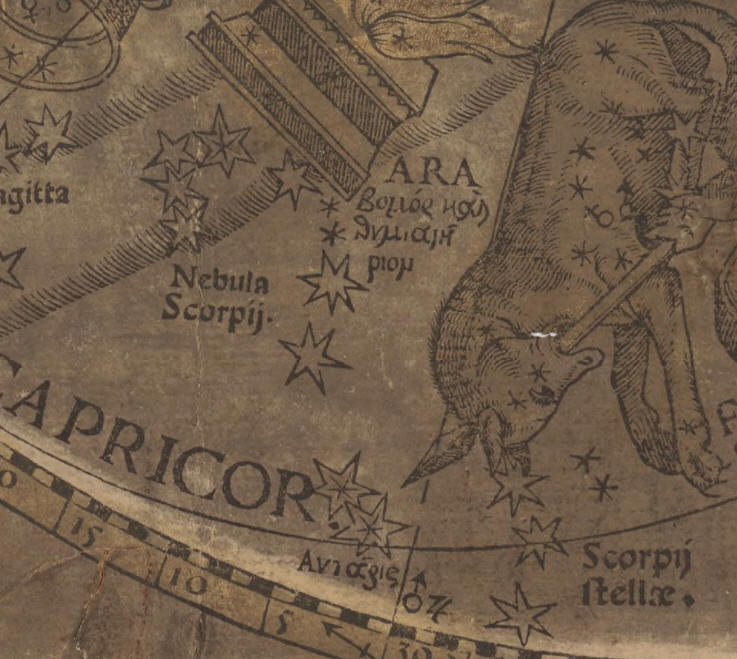
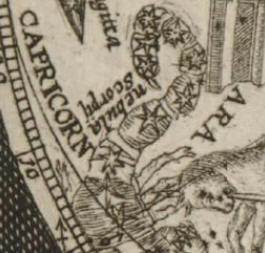
Nebula Scorpij: l'ammasso M7 o Ammasso di Tolomeo
Nella tavola di anonimo appare anche il completamento della costellazione zodiacale
C) The stars are presented by six different marks to indicate their brightness or magnitude. There are planetary symbols for astrological associations, and many stars are labelled: Acarnar (θ Eri), Aldebaran / Greek name spelled Λαμπαδιας (α Tau), Algomeysa (α CMi), Algorab (γ Crv), Alphard (α Hya), Angetenar (τ Eri), Bata Kaitos (ζ Cet), Bedelgeuze (α Ori), CANOP (α Car), Deneb algedi (δ Cap), Deneb Kaytos (β Cet), Fomahant (α PsA), Menkar (α Cet), Rigel / Algebar (β Ori), the Greek name for Antares (α Sco).
D) Iconographic features: The style follows Dürer but with two deviations: a cloud of smoke rises from Ara and a swimming maiden is at the end of Eridanus.
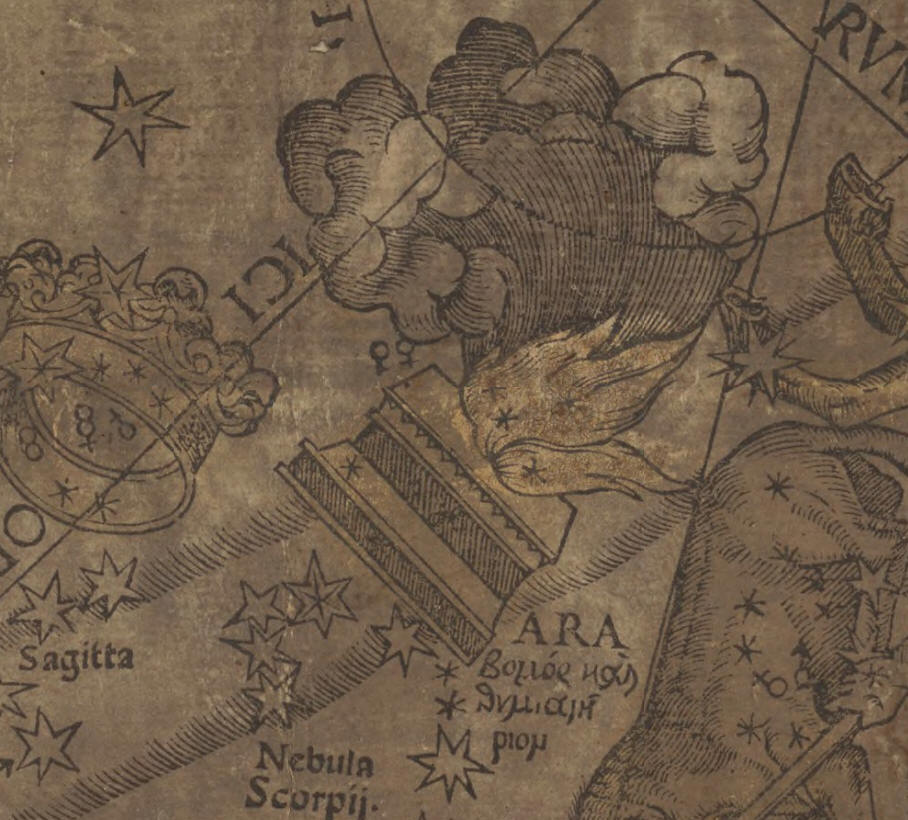
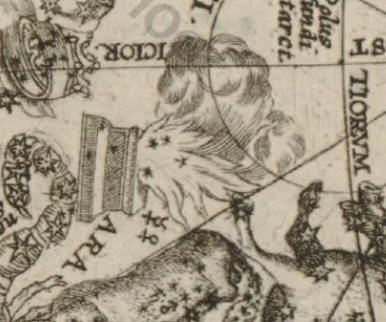
Una nuvola di fumo sale da Ara
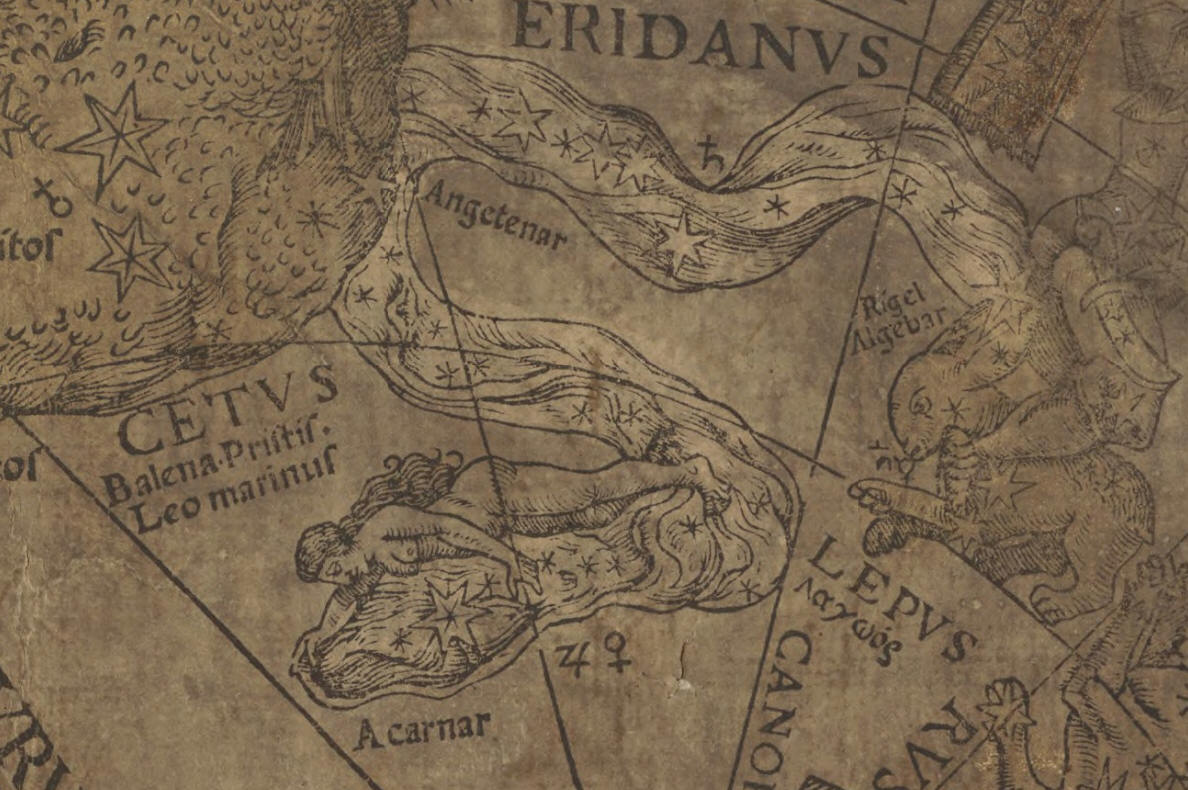

Fetonte rappresentato in sembianze femminili che nuota nell'Eridanus
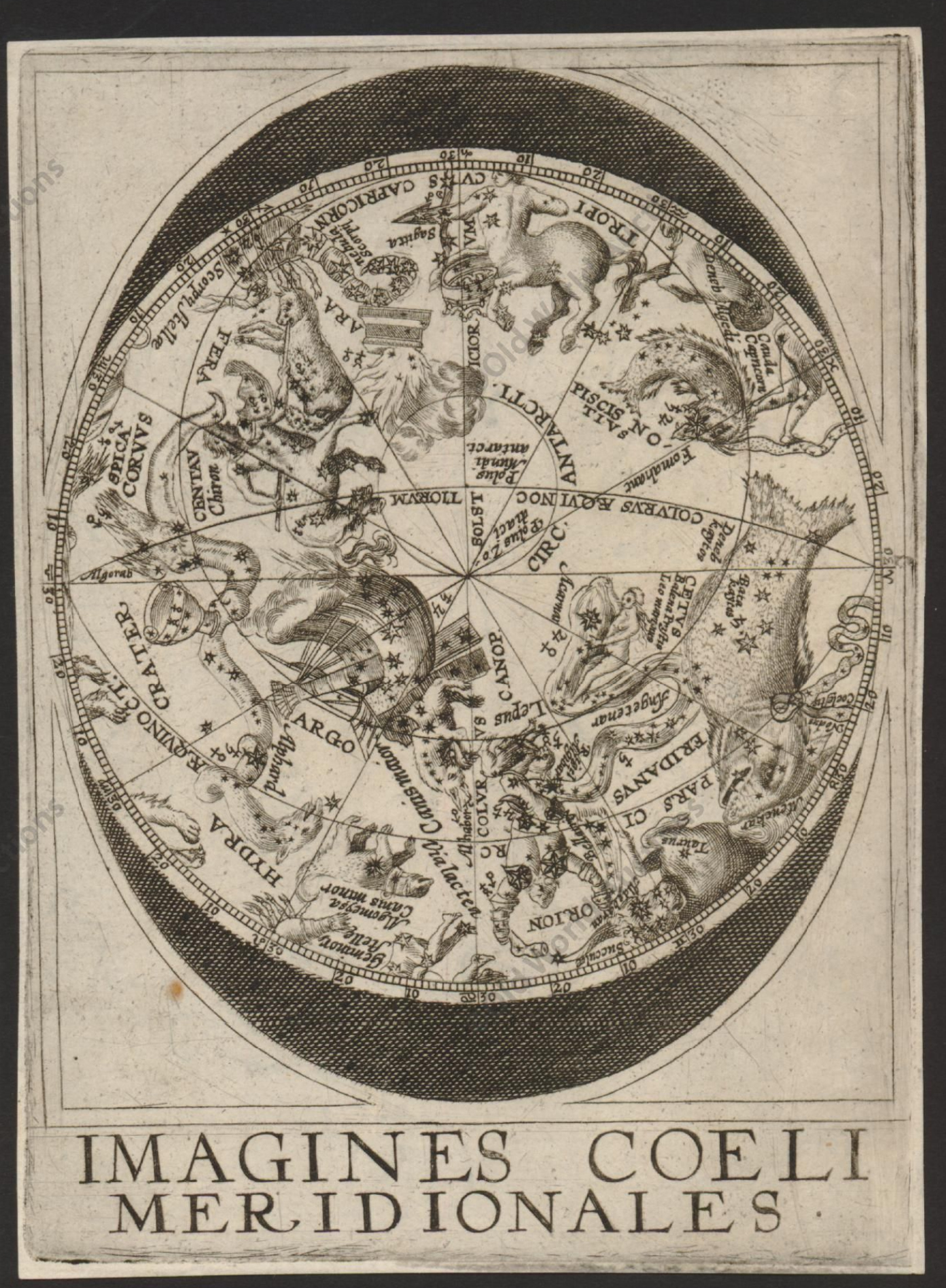
Per cortesia di

e di Hans Gaab autore di
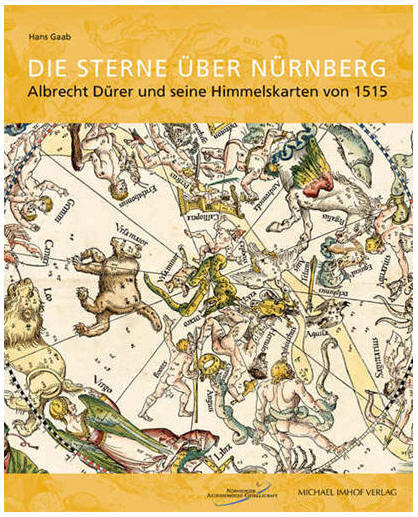
esamina nelle seguenti pagine le influenze delle tavole del Dürer sulla produzione cartografica celeste successiva
e le carte che hanno influito sulla sua produzione
Von Dürer beeinflusste Himmelskarten
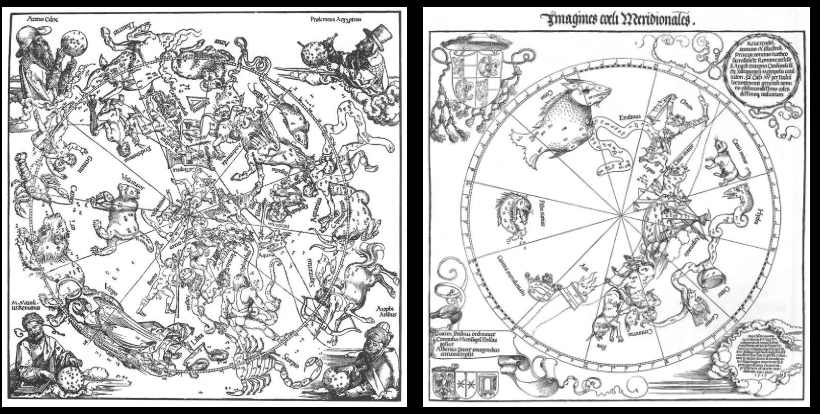
https://www.astronomie-nuernberg.de/index.php?category=duerer&page=sternkarten
https://www.astronomie-nuernberg.de/index.php?category=duerer&page=nachfolger
Consulta anche
Hieronymo de Girava
Typo de la carta cosmographica de Gaspar Vopellio Medeburgense
in
Dos Libros de Cosmographia. Milan: G.A. Castiglione and C. Carron, Milano 1556
http://www.atlascoelestis.com/Girava%201556.htm
Giovanni Antonio Rusconi
Della architettura di Gio. Antonio Rusconi, con centossanta figure dissegnate dal medesimo, secondo i precetti di Vitruvio, Venezia, 1590
http://www.atlascoelestis.com/Rusconi%20Pagina%20base.htm
http://www.atlascoelestis.com/Rusconi%20%20e%20besta.htm
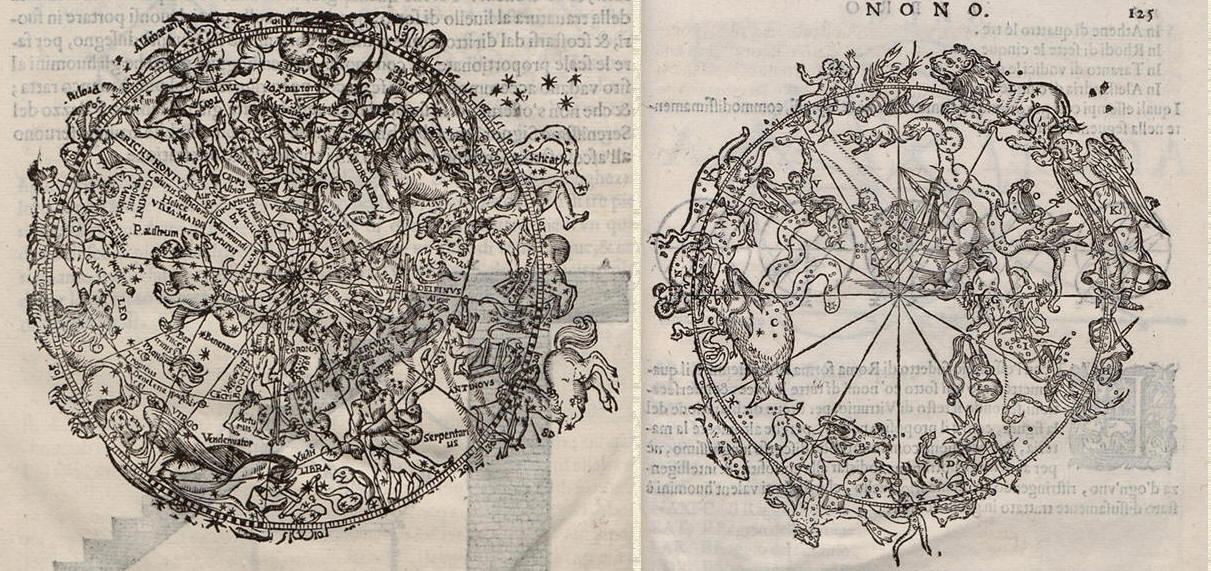
e
La creazione del cielo a Palazzo Besta, Teglio 1550 circa
http://www.atlascoelestis.com/1.htm
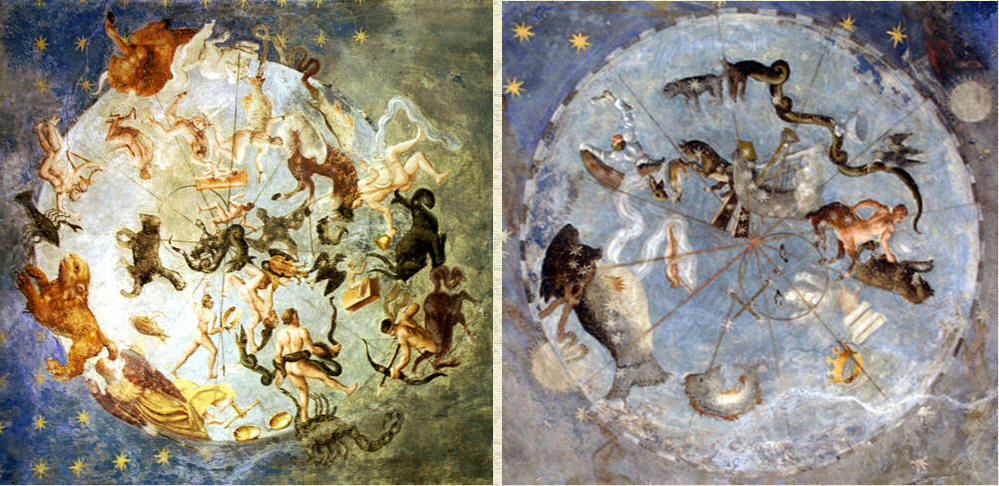
di FELICE STOPPA
AGOSTO 2019
